MCC is working with Dr Jean-Michel Chacornac, a french specialist of artificial reefs and fish aggregation structures. Luckily for us, his second visit on Koh Seh was yesterday, and it was for a very special purpose ; teach us how to build a floating bamboo cluster. This incredibly simple structure has one principal purpose, bring back fish around our reef. It’s only made from Bamboo and rope, which makes it easy to replicate, and to build.
The objective of the workshop was, in 2 days, to teach us how to assemble it, deploy it, and monitor it. That was a complete success. This was also a good opportunity for our new volunteers to help us, hands on deck, and start to understand what Marine conservation can look like !
Here are a few pictures of those three days, as well as some explanation of the work we’ve done !
DAY 1
Under the supervision of Jean-Michel, every team started the building of the pilote structure. The Bamboo floating cluster is a really simple structure. You need to create a triangle made of 6 6m long straight pieces of bamboo. Every side of the triangle is made of 2 pieces attached with each other. Once the triangle is created, you need to vertically attach weighted frayed rope to it, which recreates the verticality of a pier, attracting different types and species of fishes.
We then split in 3 different teams : One fraying all sizes of ropes, one attaching the bamboo all together, and one preparing the frayed rope to be attached on the final structure.
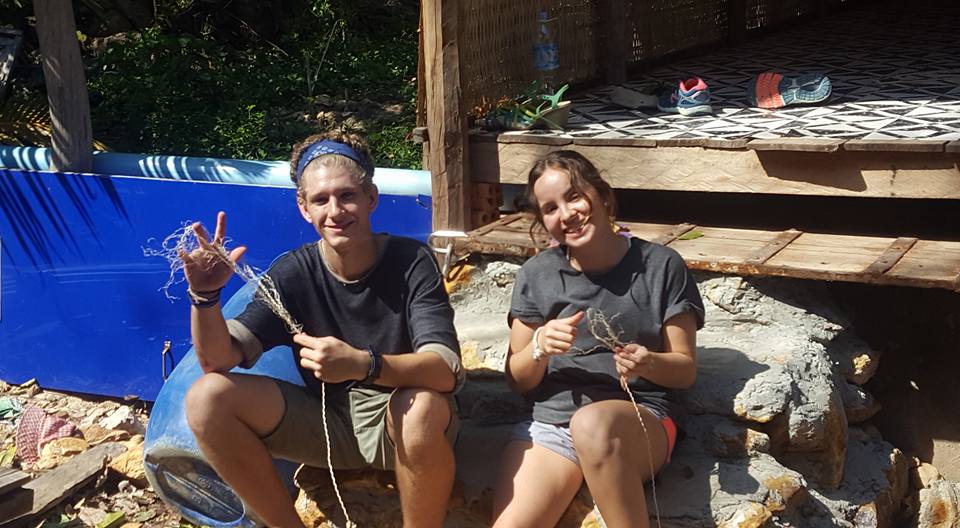
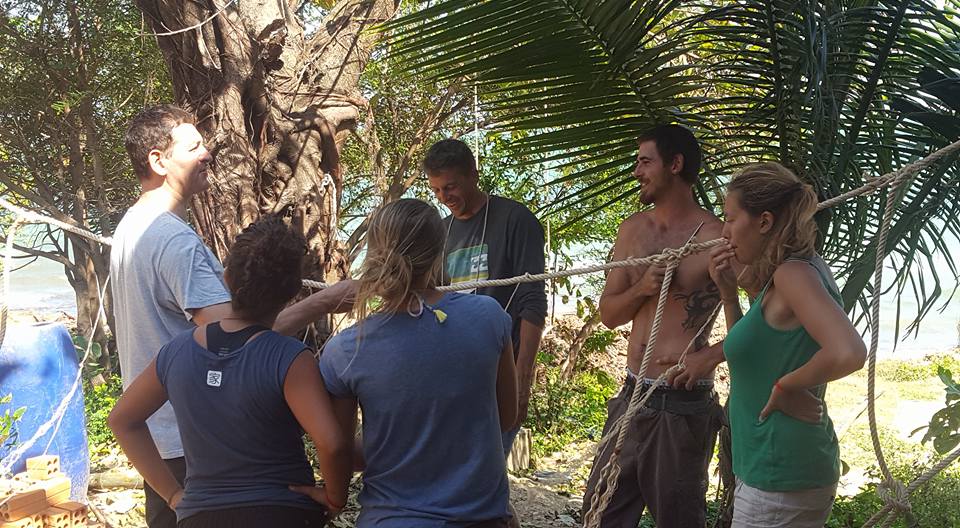
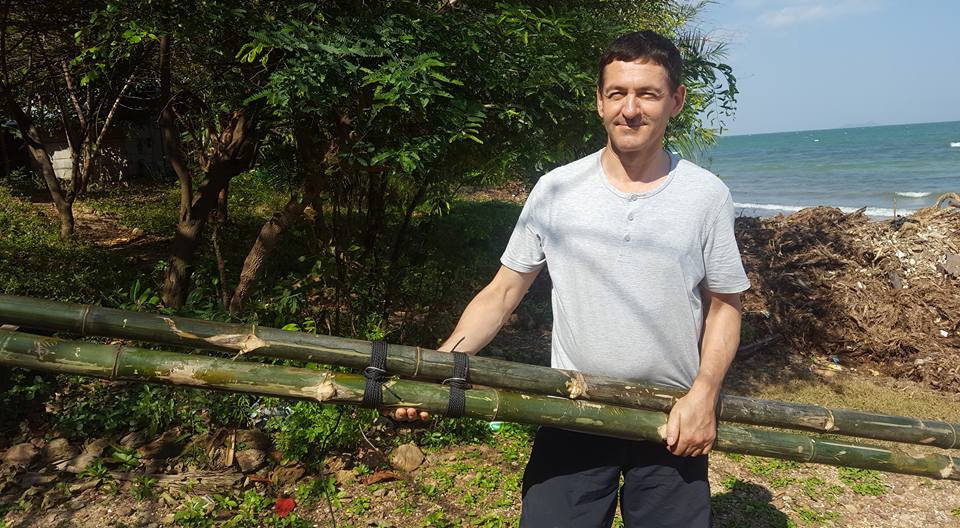
DAY 2
After a small presentation of Jean-Michel work, volunteers and staff came back at building. We had all the pieces of the puzzle ready to be assembled, we just had to follow Jean-michel wise instructions. In one day, we were able to assemble all of it, and test it in the water before deploying, planned to the next morning.
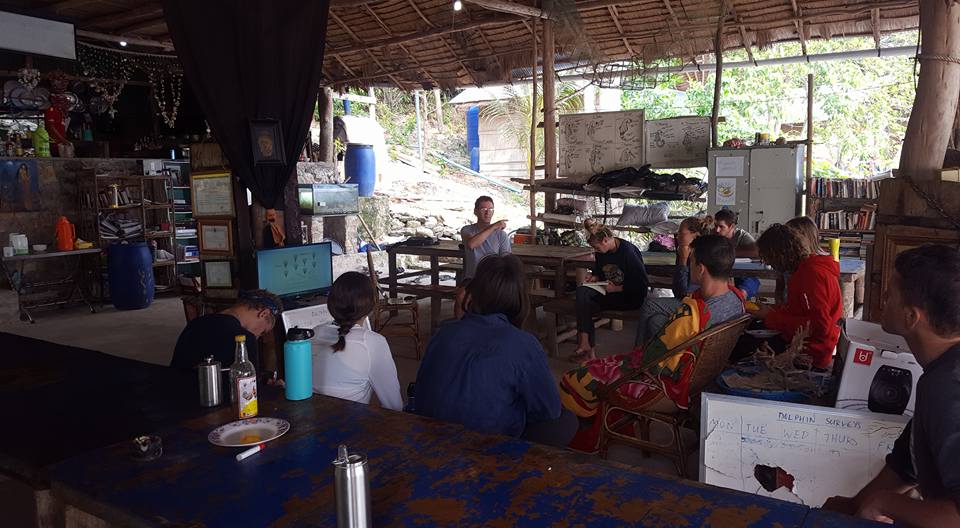
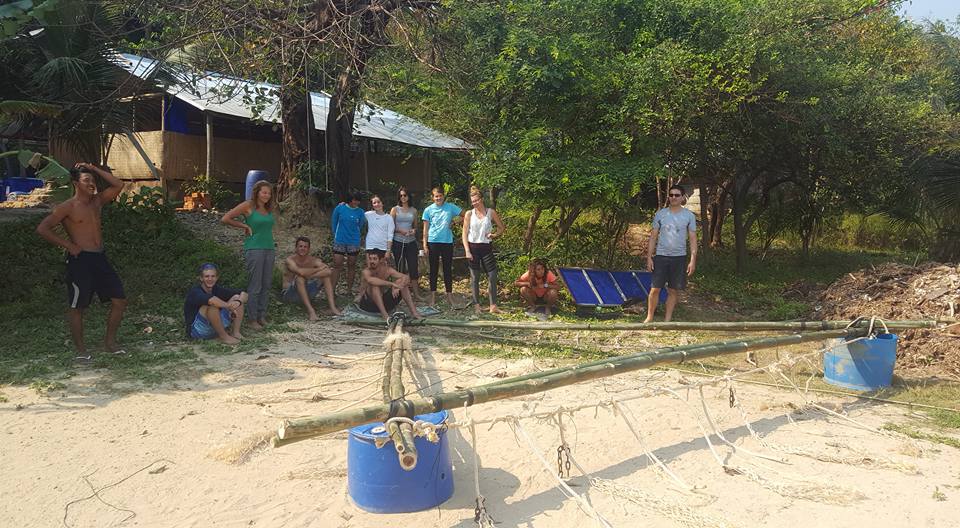
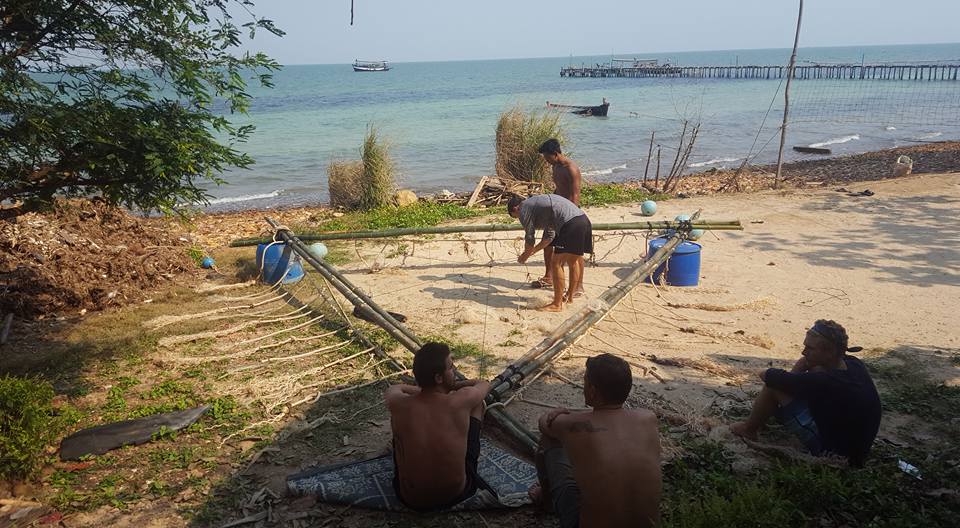
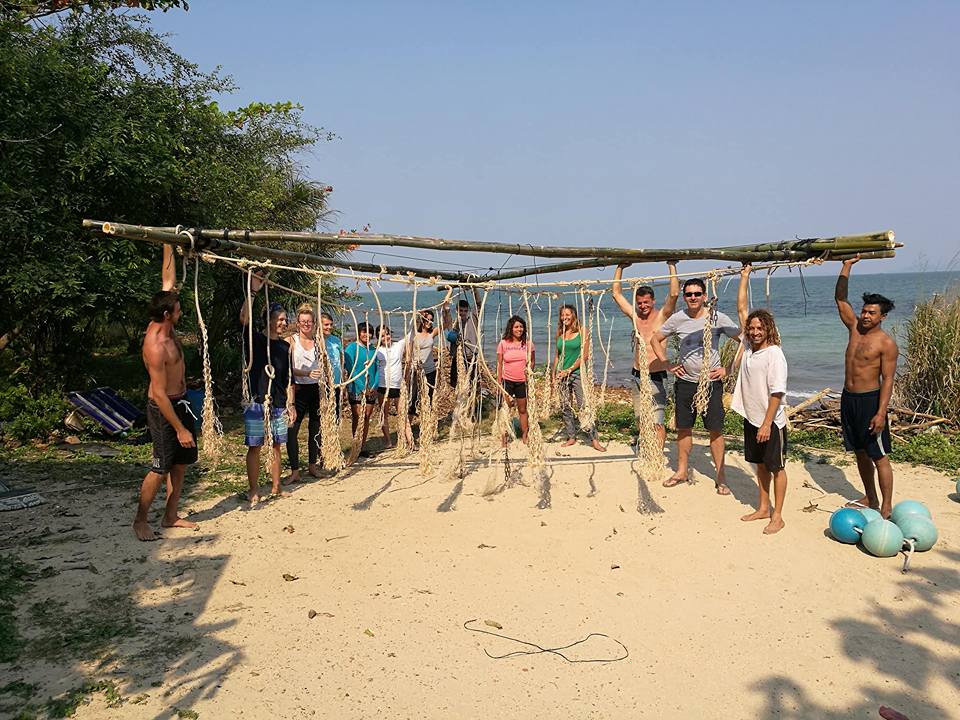
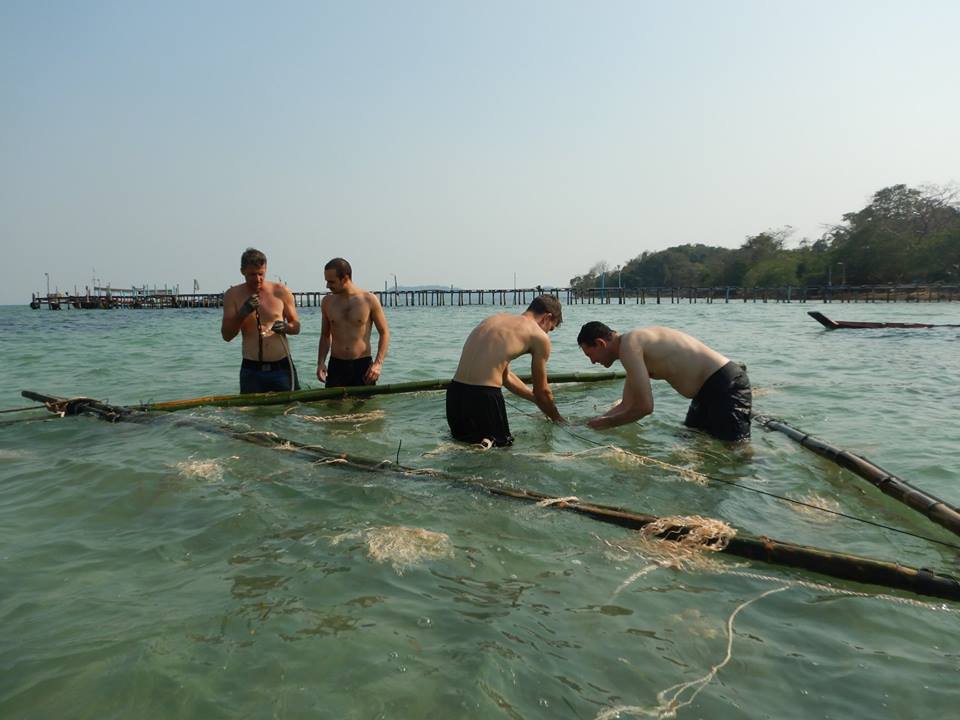
DEPLOYING
As planned, we were able to deploy it the next morning. The cluster is attached with a long rope to 2 of our artificial reefs concrete blocks. This setup allows the structure to move in circle, covering a wider distance. The length of the rope can be easily modified, depending how you want it to move.
The deployment part needed three divers. They bring the structure out from the shore, attach it to the boat, to reach the established location. The 2 concrete blocks were dropped from the boat, and marked with a buoy to be found by the divers. After that, the main job of the divers was to secure the attaching of the all cluster to the concrete block, and prevent the entanglment of the frayed ropes

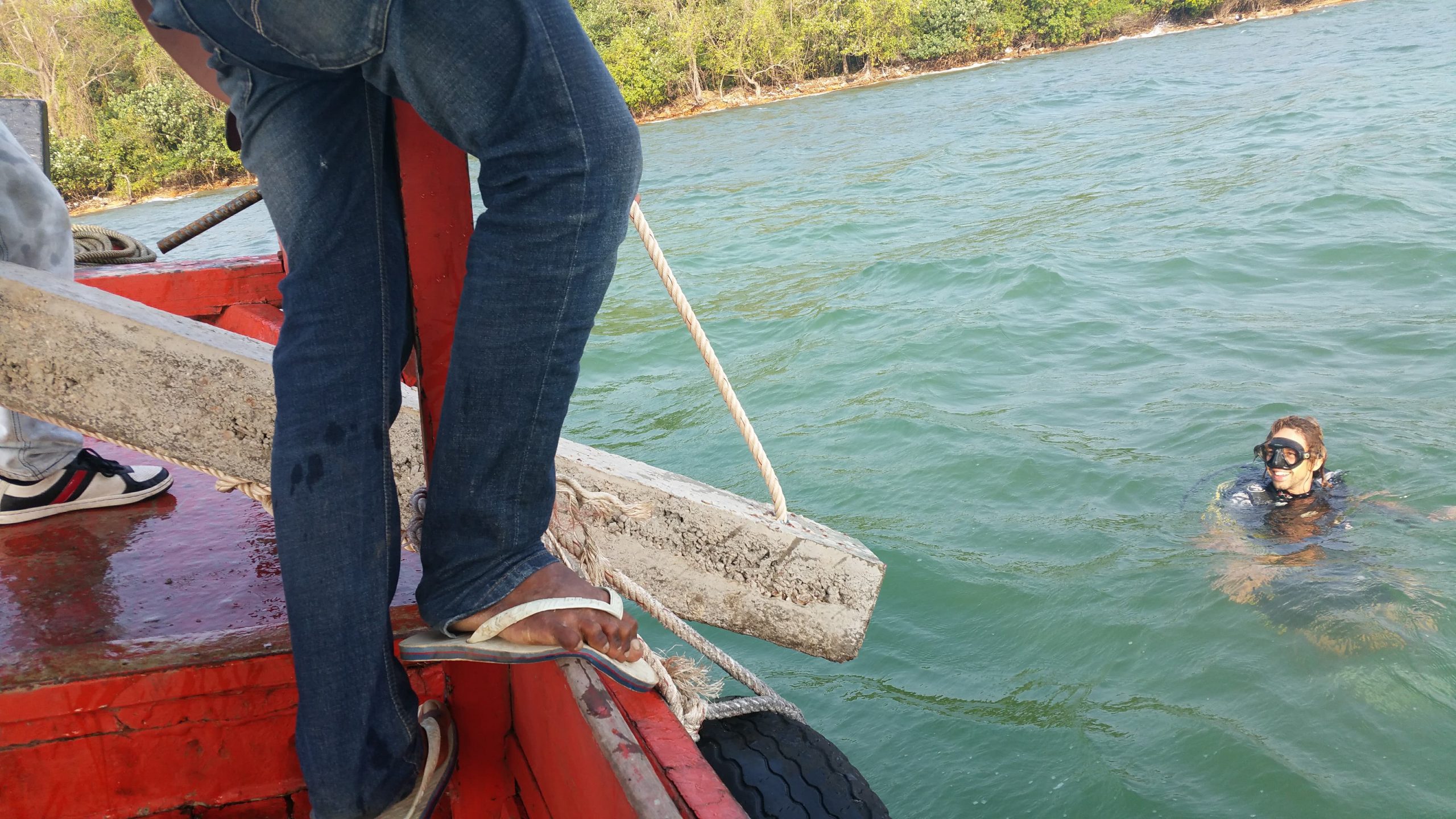
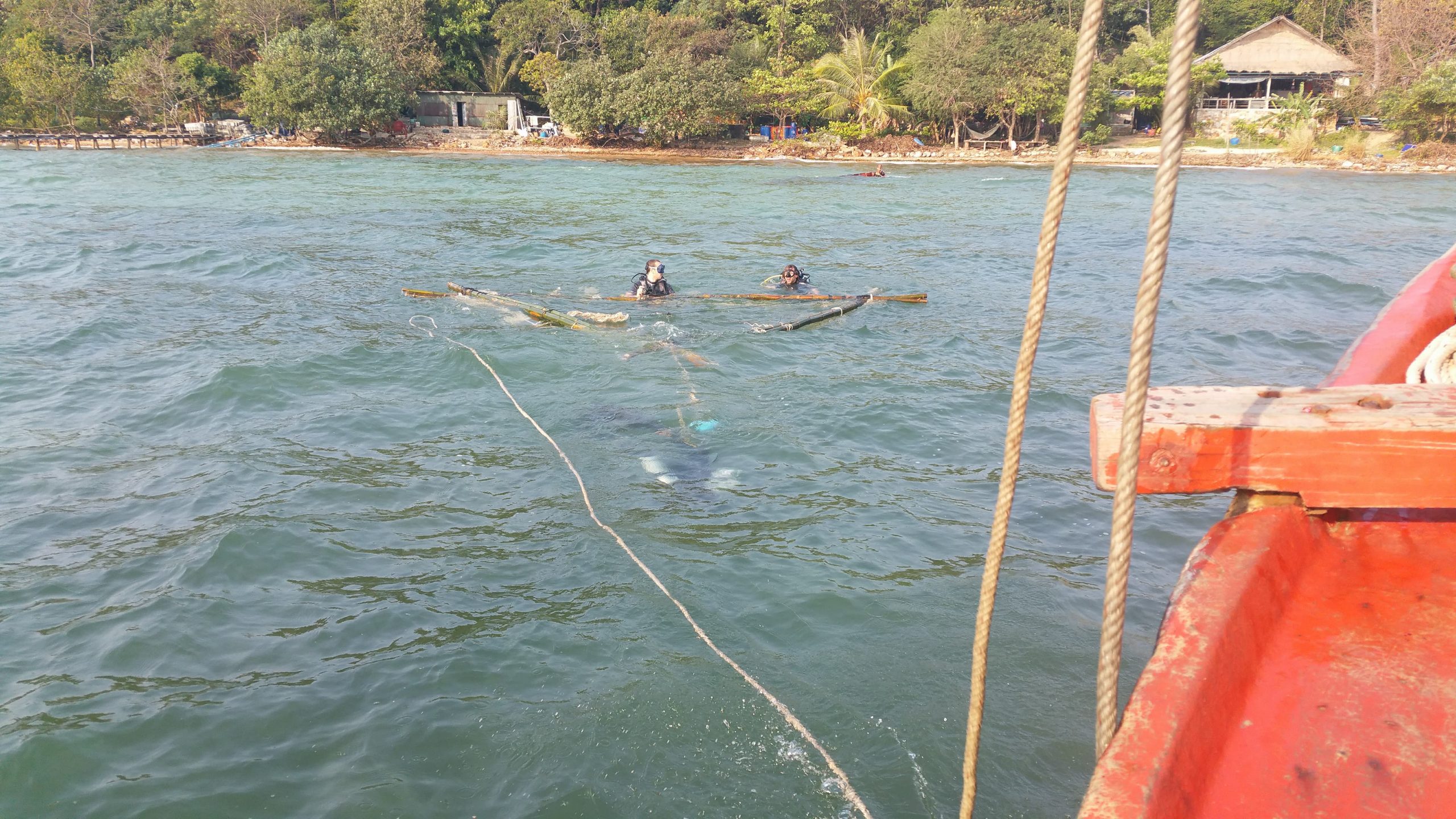

WHAT’S NEXT ?
We hope this structure is the first of many other one. Now that we deployed it, we will start to monitor it and try to understand how the fish and the ecosystem interact with it. This is very exciting for us, and we hope to deploy another one in the next few weeks ! We really want to say a big thank you to Dr Jean-Michel Chacornac for his teaching and help, and also to the volunteers that gave the best of themselves.
If you need more information on the Floating cluster concept, don’t hesitate to send us an email, or to contact us on faceboook.
